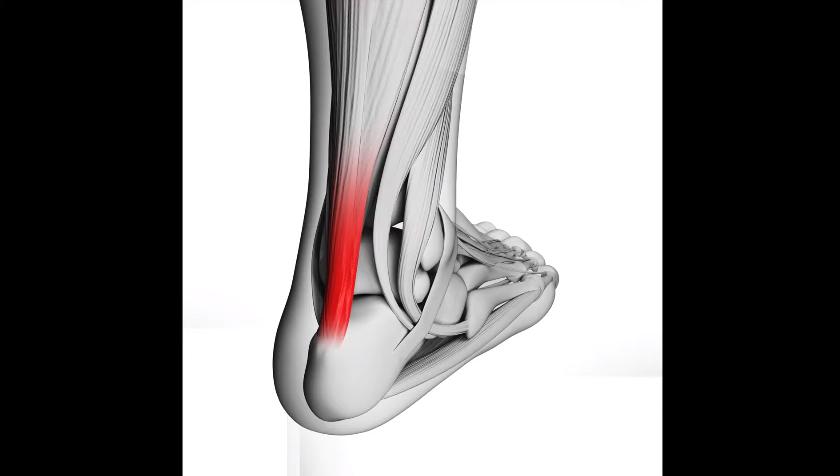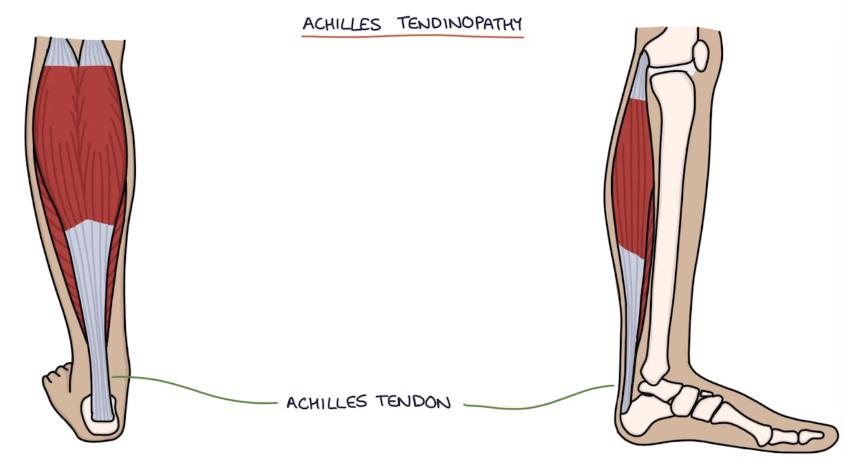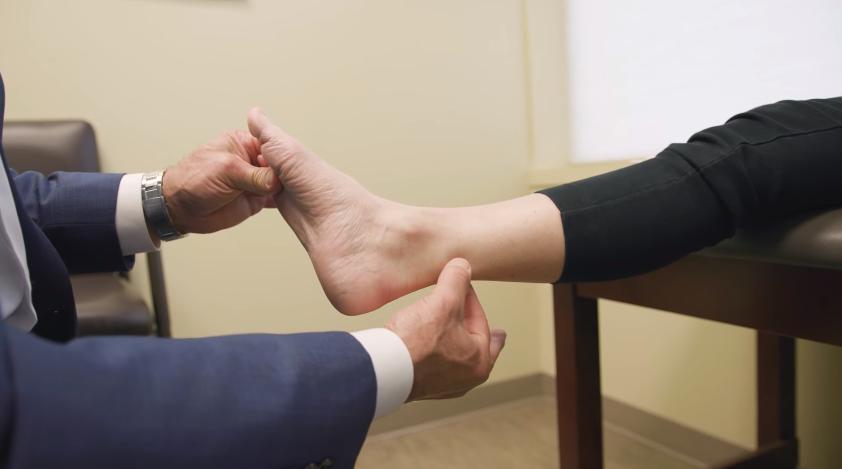The Achilles tendon is one of the largest tendons in the body and plays a crucial role in mobility. It connects the calf muscles to the heel bone, facilitating movements such as walking, jumping, and running. However, repetitive strain and incorrect form while using an elliptical machine can lead to inflammation of the tendon, resulting in pain and discomfort.
Symptoms of Elliptical Achilles Tendonitis may include pain, swelling, stiffness, and a noticeable increase in pain during exercise or physical activity. Prompt diagnosis and treatment are essential to prevent further complications and promote healing.
Treatment options for Elliptical Achilles Tendonitis include rest, ice therapy, anti-inflammatory medications, physical therapy, and in severe cases, surgery. It is also crucial to avoid vigorous exercise and maintain proper form while using an elliptical machine to prevent a recurrence of the condition. Elliptical Achilles Tendonitis is a condition caused by inflammation of the Achilles tendon due to elliptical exercise. Understanding the causes, symptoms, and treatment options can help individuals effectively manage and recover from this condition.
Understanding Elliptical Achilles Tendonitis
Elliptical Achilles tendonitis is a condition characterized by inflammation and pain in the Achilles tendon caused by using an elliptical machine. It is important to understand this condition to prevent and manage it effectively.
Understanding Elliptical Achilles Tendonitis In the world of fitness, the elliptical machine is a popular choice for a low-impact cardiovascular workout. However, overdoing it on the elliptical can lead to a painful condition known as Achilles tendonitis. In this article, we will take a closer look at this common injury, delve into its causes, and explore the signs and symptoms to watch out for.
What Is Achilles Tendonitis?
Achilles tendonitis is a condition characterized by inflammation of the Achilles tendon, the large tendon that connects the calf muscles to the back of the heel. This tendon is crucial for activities that involve the use of the lower leg, such as walking, running, and jumping. When it becomes inflamed, it can cause pain, stiffness, and swelling, making it difficult to perform everyday activities.

Causes Of Elliptical Achilles Tendonitis
Elliptical Achilles tendonitis is typically caused by overuse or repetitive stress on the tendon. When you exercise on an elliptical machine, the repetitive motion can put strain on the Achilles tendon, leading to microtears in the tendon fibers. Over time, these tears can accumulate and cause inflammation and pain. Factors such as sudden increases in workout intensity, improper form, inadequate warm-up, and wearing non-supportive footwear can also contribute to the development of Achilles tendonitis.
Signs And Symptoms Of Elliptical Achilles Tendonitis
Recognizing the signs and symptoms of elliptical Achilles tendonitis is crucial for early intervention and treatment. Here are some common indicators to watch out for:
- Pain and tenderness along the back of the heel or calf
- Stiffness and limited range of motion in the ankle
- Swelling and redness around the affected area
- A noticeable thickening of the Achilles tendon
- A popping or snapping sensation during physical activity
- Difficulty walking or engaging in exercise due to pain
If you experience any of these symptoms, it’s important to consult a healthcare professional or a sports medicine specialist for an accurate diagnosis and appropriate treatment plan. Ignoring the symptoms and continuing to exercise can worsen the condition and lead to more severe complications. By understanding Achilles tendonitis, its causes, and the signs and symptoms associated with elliptical training, you can take proactive measures to prevent and manage this condition.
Remember to listen to your body, practice proper form and technique, gradually increase your workout intensity, and ensure you have adequate footwear support during elliptical exercise. Taking care of your Achilles tendon will help you stay active and injury-free while enjoying the benefits of this popular workout machine.
Preventing Elliptical Achilles Tendonitis
Achilles tendonitis is a common injury that can occur when using an elliptical machine. It typically arises due to overuse or strain on the Achilles tendon, leading to pain and discomfort in the back of the heel. However, by following these preventative measures, you can decrease the risk of developing elliptical Achilles tendonitis and ensure a safe and effective workout.

Proper Warm-up And Cool-down Techniques
Before hopping onto the elliptical, taking the time to properly warm up and cool down can make a significant difference in preventing Achilles tendonitis. Warming up helps increase blood flow to the muscles and prepares them for exertion, reducing the risk of injury. Similarly, cooling down allows your heart rate and muscles to gradually return to their resting state, preventing sudden stress on the Achilles tendon.
Gradual Progression And Training Intensity
One of the biggest mistakes individuals make when using an elliptical machine is pushing themselves too hard, too soon. To prevent Achilles tendonitis, it is crucial to gradually increase the intensity and duration of your elliptical workouts. Start with shorter sessions at a lower resistance level and gradually increase this over time. By allowing your body to adapt and strengthen, you can minimize the strain on your Achilles tendon and reduce the risk of injury.
Choosing The Right Footwear For Elliptical Training
When it comes to elliptical workouts, having the right footwear is essential for preventing Achilles tendonitis. Investing in a pair of athletic shoes that provide proper arch support, cushioning, and stability can greatly reduce the stress on your Achilles tendon. shoes specifically designed for cross-training or running to ensure optimal comfort and protection during your elliptical training sessions.
Optimizing Biomechanics And Form
In addition to footwear, optimizing your biomechanics and maintaining proper form while using the elliptical can significantly lower the risk of Achilles tendonitis. Ensure that your body weight is evenly distributed, your posture is upright, and your feet remain flat on the pedals throughout your workout. Avoid excessive toe pointing or slouching, as these can place additional strain on your Achilles tendon.
By following these prevention strategies, you can enjoy your elliptical workouts without worrying about developing Achilles tendonitis. Remember, taking the time to warm up, gradually progress in intensity, wear appropriate footwear, and maintain proper form will go a long way in keeping your Achilles tendon healthy and injury-free.
Treating Elliptical Achilles Tendonitis
Elliptical Achilles tendonitis is a common injury experienced by individuals who engage in elliptical workouts. The repetitive nature of this exercise can cause inflammation and irritation in the Achilles tendon, resulting in discomfort and pain. However, with the right treatment approach, you can effectively manage and recover from this condition. In this article, we will explore various treatment methods that can help alleviate symptoms and promote healing. Let’s dive in!

Rest And Recovery
The first and most crucial step in treating elliptical Achilles tendonitis is to provide ample rest and allow your body to recover. Resting the affected foot or ankle can help reduce inflammation and prevent further damage to the tendon. Refrain from engaging in activities that put strain on your lower leg, such as running or jumping. Give yourself sufficient time to heal, and avoid pushing through the pain, as it may worsen the condition.
Icing And Compression
Icing and compression are effective methods to reduce inflammation and provide pain relief for Achilles tendonitis. Applying an ice pack wrapped in a thin cloth to the affected area for 15-20 minutes several times a day can help reduce swelling. Additionally, using a compression bandage or sock can provide support to the tendon and minimize further strain during movement. Remember to always wrap the bandage firmly but not too tightly, to avoid cutting off blood circulation.
Stretching And Strengthening Exercises
Performing stretching and strengthening exercises can aid in the healing process and prevent future occurrences of elliptical Achilles tendonitis. Before engaging in any exercise, it’s essential to warm up properly to avoid further injury. Start with gentle calf stretches, such as the wall calf stretch or seated calf raises, to improve flexibility in the calf muscles. Strengthening exercises, such as single-leg heel raises or eccentric heel drops, can help improve the strength and stability of the Achilles tendon.
Medical Intervention And Physical Therapy
If rest, icing, compression, and exercises do not provide sufficient relief, seeking medical intervention or physical therapy may be necessary. A healthcare professional can evaluate your condition and recommend appropriate treatments, such as anti-inflammatory medications or corticosteroid injections. They may also suggest physical therapy sessions to address any muscle imbalances or weaknesses contributing to the injury. Physical therapy can help you regain strength in the tendon and improve overall lower limb function.
Treating elliptical Achilles tendonitis requires a comprehensive approach that combines rest, icing, compression, stretching, and strengthening exercises. It’s crucial to listen to your body and give yourself enough time to recover fully. By following these treatment methods and seeking appropriate professional assistance if needed, you can effectively manage and overcome elliptical Achilles tendonitis, allowing you to get back to your workouts pain-free.
Conclusion
Elliptical Achilles tendonitis can be both painful and frustrating for those who love using the elliptical for their workouts. The key to preventing and treating this condition lies in understanding the causes and implementing preventative measures. By maintaining proper form, wearing appropriate footwear, and gradually increasing intensity, individuals can minimize the risk of developing Achilles tendonitis.
Remember, taking care of your body is crucial for long-term fitness success. So, listen to your body and make the necessary adjustments to keep your workouts injury-free.